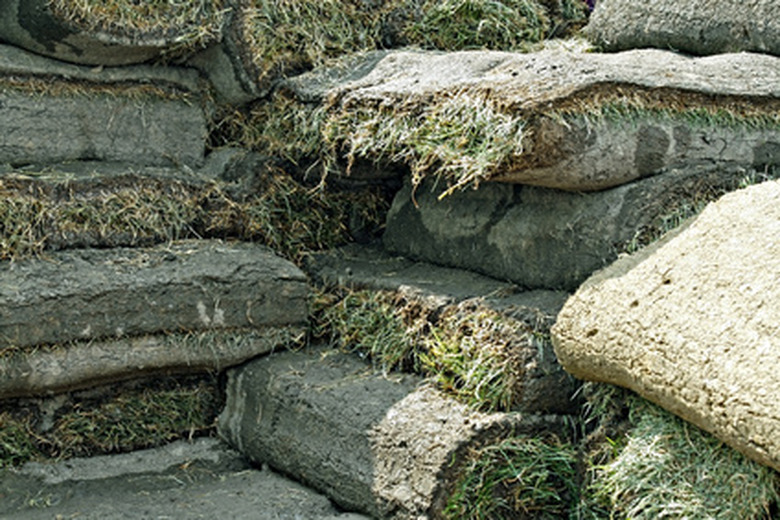How To Transplant Bermuda Grass
Many homeowners living in the southern United States plant Bermuda grass, a hardy perennial, heat-loving grass that is easy to maintain and spreads quickly in a variety of soils. Also known as livestock or foliage grass, an established patch of Bermuda grass also transplants easily to a new location. Although you can plant a Bermuda lawn by seed, laying Bermuda grass sod is easier because it provides an instant lawn. This persistent and aggressive grass is not damaged during the transplant process.
Step 1
Select your site before transplanting Bermuda grass. Keep in mind that this grass prefers a sunny location with well-drained soil.
Step 2
Loosen the soil in the planting site with a shovel to aerate it. Test the pH of the soil so you can amend it accordingly. Add lime to maintain the pH level at a minimum of 6.0. Also follow label directions to apply lawn-starter fertilizer to the area.
- Many homeowners living in the southern United States plant Bermuda grass, a hardy perennial, heat-loving grass that is easy to maintain and spreads quickly in a variety of soils.
Step 3
Spread a thin layer of powdered chalk to divide the Bermuda grass into manageable 2- to 3-foot squares. Do this until you cover the entire patch of Bermuda grass you want to transplant. You can even demarcate 2- to 3-foot wide rows over the grass and make strips.
Step 4
Start at one end of the established grass and insert a shovel into the ground, over the mark. Follow the outline of each square by inserting the end of the shovel over the four lines. Push the shovel down into the soil under the patch so you collect all the roots, and lift the section of grass. If you have sod strips, roll each strip as tightly as possible.
- Spread a thin layer of powdered chalk to divide the Bermuda grass into manageable 2- to 3-foot squares.
- Push the shovel down into the soil under the patch so you collect all the roots, and lift the section of grass.
Step 5
Collect the squares in a wheelbarrow or tarp in a shaded area to prevent the roots from drying while you work. Mist the roots frequently so they remain hydrated.
Step 6
Place each Bermuda sod square or strip over the new planting site, pressing it down to maintain good soil-to-roots contact. Place another square flush against the previous one, making sure there are no gaps between the seams. Continue this process until you lay all your sod strips or patches.
Tip
Wait until spring or summer before transplanting the grass, when the soil temperature is consistent at 65 degrees F. Be careful when rolling and carrying sod strips, as they can get quite heavy. Ask someone to help you lift the rolls, to prevent straining your back. You can also make sod strips that you can cut into squares later with a utility knife.
Things Needed
- Powdered chalk
- Shovel
- Soil pH testing kit
- Lime
- Lawn starter fertilizer
- Tarp or wheelbarrow
- Spray bottle
